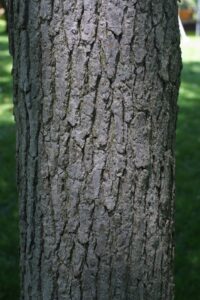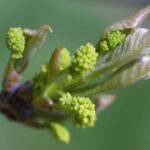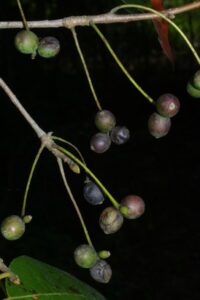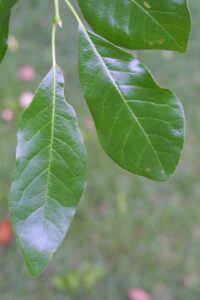Botanical Name:
Nyssa sylvatica
Family Name:
Nyssaceae / Sour Gum
Description:
Also called the Tupelo or sour gum, the black gum is a slow growing, medium sized tree with lustrous dark green leaves that produce brilliant colors in the fall. The berries of this tree provide important nutrition for migratory birds.
Size:
30-50′
Habitat and Range
The black gum does well in average to wet soils with full sun to part shade. It is an adaptive tree that will tolerate poorly drained soils and standing water as well as brief droughts. The tree is native to eastern North America and grows from the coast to eastern Texas.
Attributes:
The black gum features outstanding dark, glossy leaves that explode into spectacular crimsons, purples, yellows, and oranges in the fall. The tree generally grows in a rounded shape with a straight trunk and bark that is said to look like alligator skin. Tiny greenish-white flower clusters in the spring give way to small dark fruits that are edible but sour.
Wildlife Value:
The flowers of this tree provide a rich nectar for bees and is an important source for honey. Hollow trunks and limbs provide homes for bees, cavity-nesting birds, and various small mammals. Deer are extremely fond of the leaves on seedlings and saplings but largely leave mature trees alone. The fruit, which ripens before many other fall fruits, provides a valuable energy source for migratory birds.
Did you Know?
• The name black gum refers to the dark leaves; Tupelo is derived from the Creek Indian name for the tree (ito opilwa), which means “swamp tree.”
• Black gums begin decaying from the top, so trees become shorter as they grow older and become hollowed out near the end of their lives.
Benefits to Our Community (based on carbon dioxide sequestered, storm water runoff avoided, and air pollution removed each year):
Over the next 15 years, this tree will give back $90 worth of benefits to our community.




